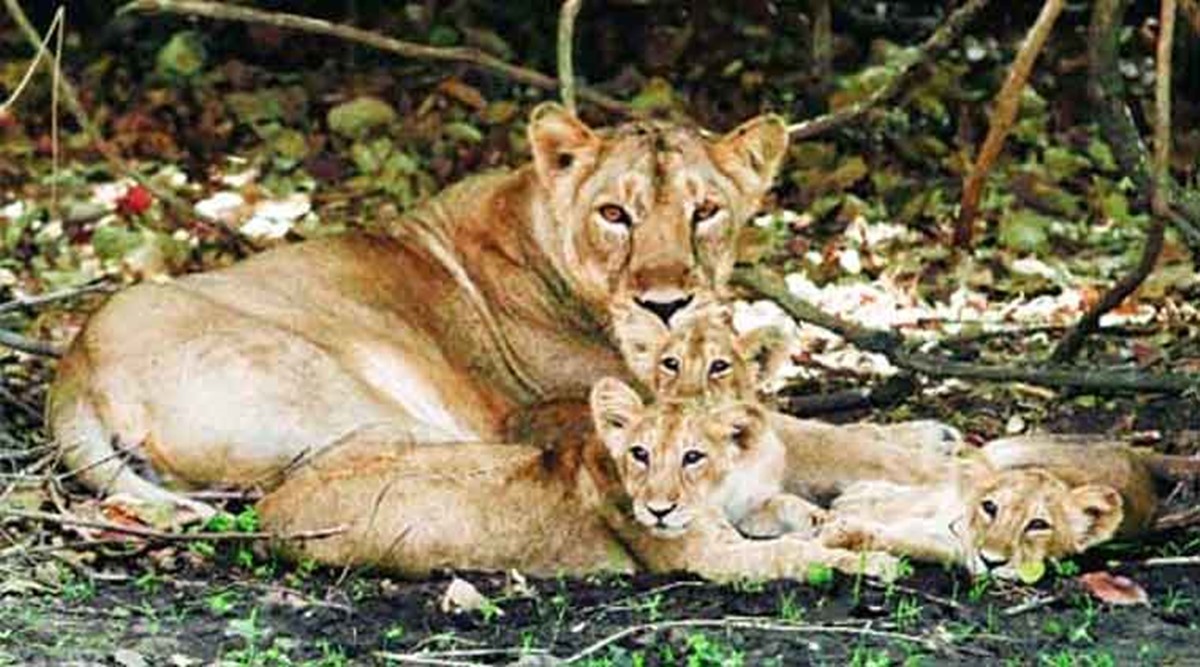 The tourist numbers and revenue figures for the financial year 2019-’20 do not include those who visited Ambardi safari park near Dhari in Gir (east), which was inaugurated in 2017.
The tourist numbers and revenue figures for the financial year 2019-’20 do not include those who visited Ambardi safari park near Dhari in Gir (east), which was inaugurated in 2017. Even as the outbreak of Covid-19 forced the early closure of the tourist season in Gir forest, the last abode of Asiatic lions in the world recorded footfall of over five lakh tourists for financial year 2019-’20. generating Rs 10.78 crore revenue for the Gujarat Forest department. However, officials said that the revenue may decline in the current financial year due to the ongoing extended suspension of tourism activities.
According to data available with the Gujarat State Lion Conservation Society (GSLCS), a total of 5,23,660 tourists visited the Gir forest and went on lion safaris inside the Gir National Park and Wildlife Sanctuary (GNPS) as well as the Gir Interpretation Zone (GIZ) in Devaliya, generating Rs 10.78 crore revenue. The lion safaris inside GNPS originate from Sasan, the headquarters of the sanctuary superintendent. GIZ Devaliya near Sasan is popularly known as the Devaliya safari park, where Asiatic lions and other major fauna of Gir are kept in a semi-captive environment.
The tourist numbers and revenue figures for the financial year 2019-’20 do not include those who visited Ambardi safari park near Dhari in Gir (east), which was inaugurated in 2017.
GSLCS, an autonomous body functioning under the aegis of the state forest department that aids lion conservation and management efforts of the government, gets tourism revenue generated at Sasan, Devaliya and at Ambardi safari park. The state government also gets a part of revenue generated at Ambardi.
In the last financial year, 1,52,091 tourists visited Sasan for lion safaris inside the GNPS, while 3,80,569 visited the Devaliya safari park. They generated Rs 4.29 crore and 6.49 crore revenue respectively, mostly in the form of permit fees for safaris. This is the highest tourist footfall in Gir after 2017-’18, when a total of 5,45,692 tourists had visited the two parks, generating Rs 11.17 crore revenue, the highest in the last five years.
Due to the Covid-19 lockdown, the two parks closed on March 21, 10 days before the formal end of the financial year. However, by that time, the number of tourist footfalls had surpassed the tally of 5,23,656 tourists recorded in 2018-’19. Nonetheless, Rs 11.05 lakh revenue in the preceding year was marginally higher than that of 2019-’20, thanks largely to more tourists opting for NGPS safaris for which permit fees are higher than that of Devaliya safari park. In 2018-’19, as many as 1,54,444 tourists went on safari inside the GNPS as compared to 1,52,091 for the year 2019-’20.
The twin parks have not opened till date, resulting in a significant loss of presumptive revenue for the GSLCS. “On an average, eco-tourism activity at Sasan and Devaliya generate around Rs 90 lakh revenue per month. Diwali, December-January and April see a peak in tourist footfalls. But due to Covid-19, we have kept the parks closed,” said Dushyant Vasavada, chief conservator of forests (CCF) of Junagadh Wildlife Circle and member secretary of the GSLCS. Vasavada said that a number of safari permits issued in advance had to be cancelled and fees refunded due to the closure of the twin parks.
Vasavada said that due to Covid-19, tourism activities have remained suspended for 11 weeks of the season leading to around Rs 1.5 crore worth of revenue loss. The loss would be more pronounced in 2020-’21, as the April peak – which coincides with summer vacations in schools and colleges – has already been lost.